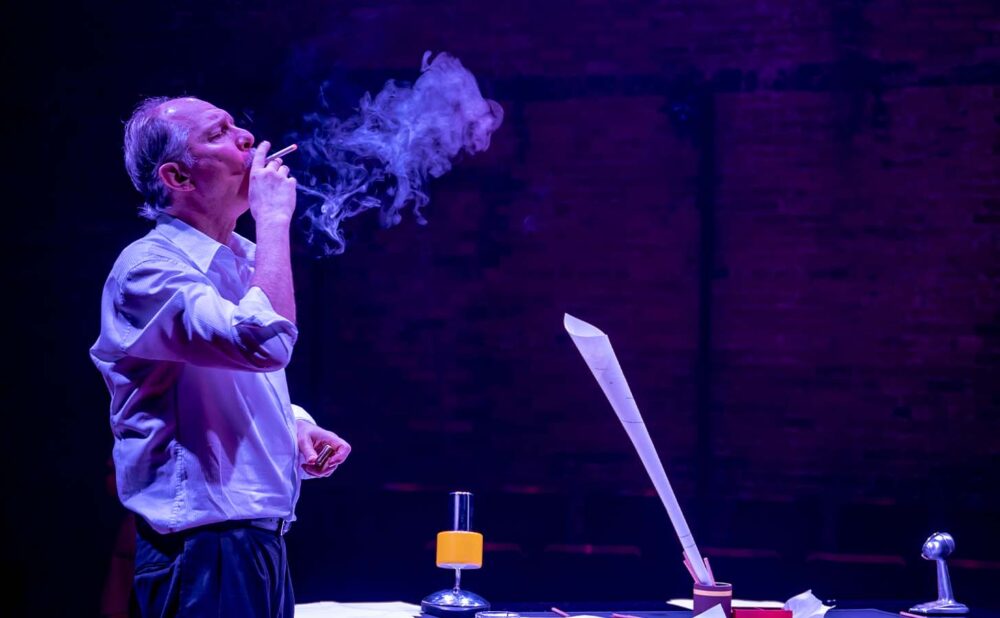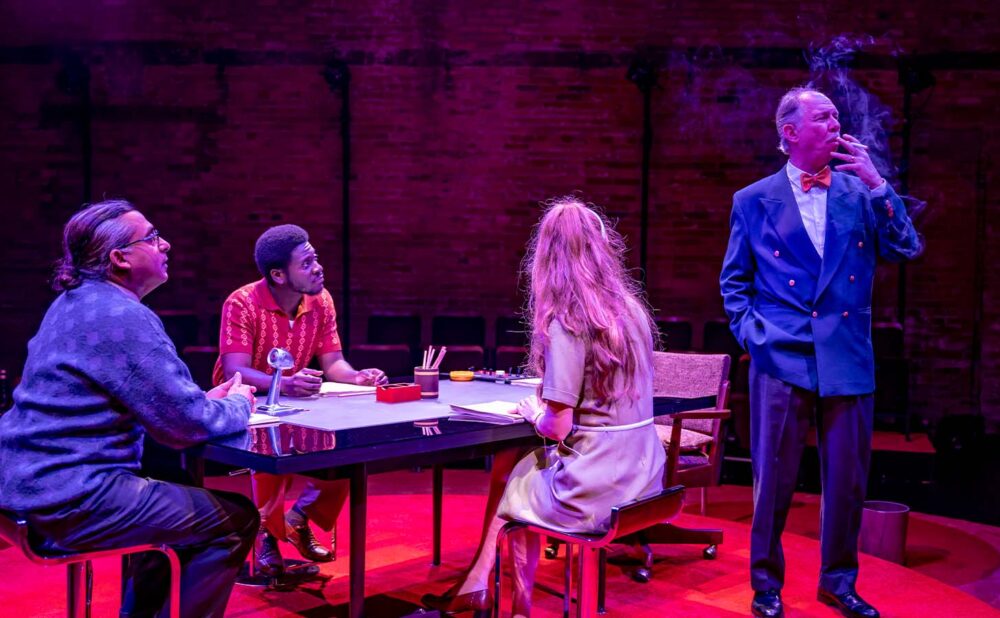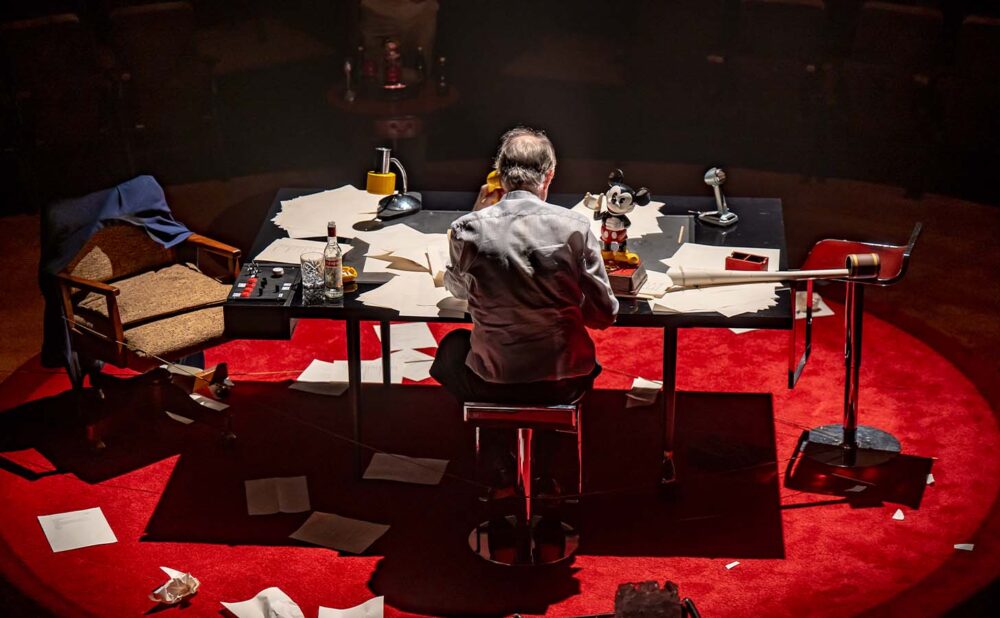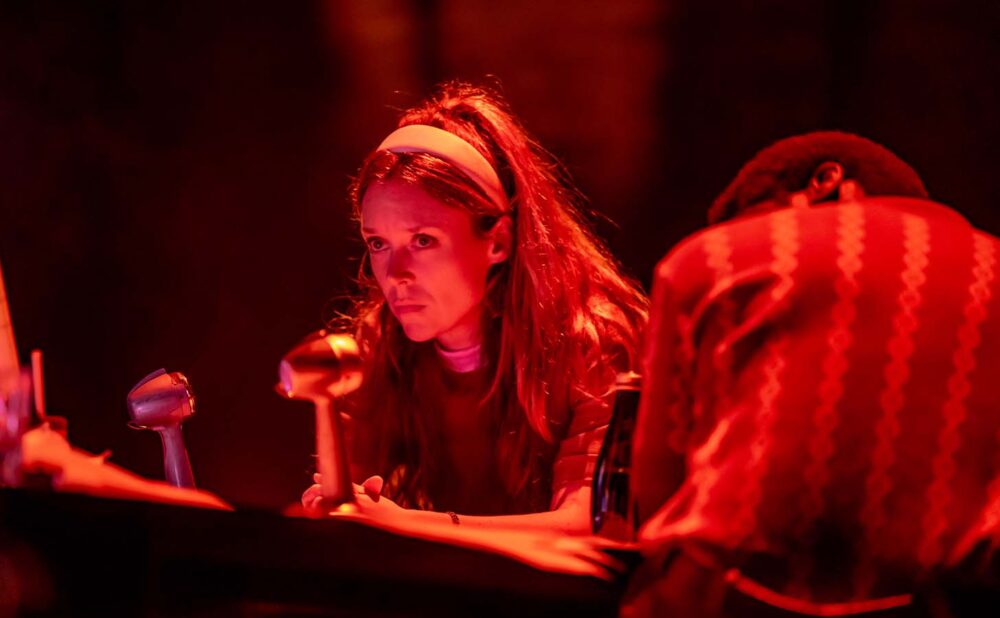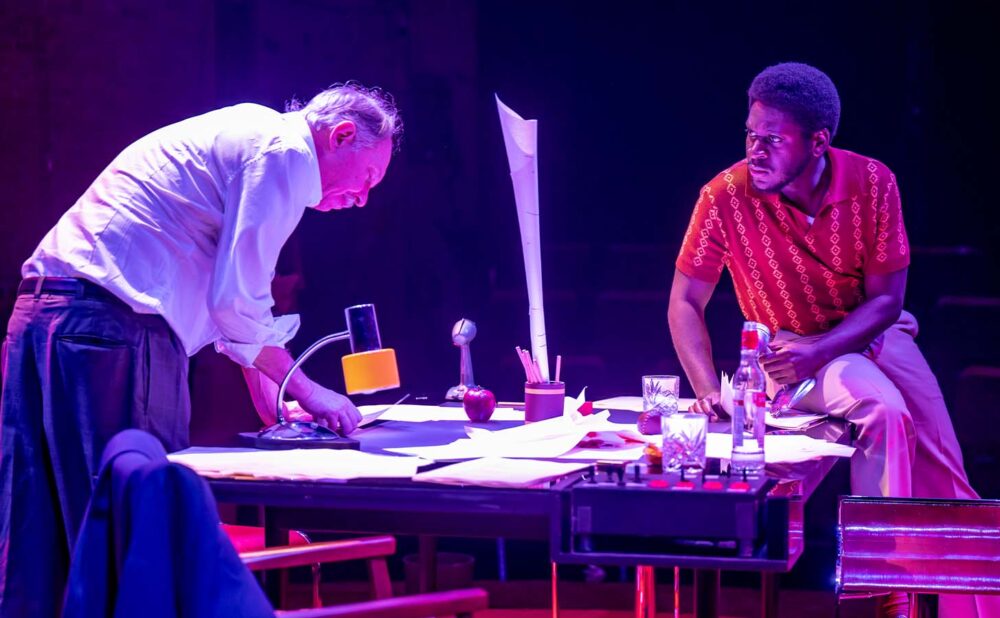Review: Soulpepper exposes Walt Disney’s dark side in stylish but muted comedy
Co-production with Outside the March feels oddly contained
What: A Public Reading of an Unproduced Screenplay About the Death of Walt Disney
Where: Soulpepper Theatre, 50 Tank House Lane
When: Now, until Sun., May 12
Highlight: Stylish, immersive design
Rating: NNN (out of 5)
Why you should go: Mitchell Cushman’s intimate production uses the Marilyn and Charles Baillie Theatre in a manner you may never see again.
SOULPEPPER Theatre’s website calls A Public Reading of an Unproduced Screenplay About the Death of Walt Disney, its new co-production with the rabble-rousing Outside the March (OtM), a “fantasia for the age of Succession.” It’s easy to see why the 90-minute, semi-fictional bioplay about Uncle Walt — penned by Lucas Hnath, the mind behind Dana H., recently seen at Crow’s Theatre — has elicited comparisons to that hit HBO show; beyond their focus on the name “Roy,” both make the downfall of a despicable billionaire ring with tragic resonance, gunning for the Shakespearean and sometimes hitting.
But fantasia? Although the reference to the 1940 Mickey Mouse film amuses, the show doesn’t exude the liberated quality the word implies. Instead, OtM artistic director Mitchell Cushman’s stylish production feels contained, like a cartoon mouse scurrying through a house’s walls, unable to find its way into the kitchen.
Walt (Soulpepper founding member Diego Matamoros) has written a screenplay about his life. Around a cluttered table, brother Roy (Anand Rajaram), daughter Diane (Katherine Cullen) and son-in-law Ron (Tony Ofori) join him to read it. The subtext: the non-Walt characters are there out of obligation, not desire. They humour this rich, all-powerful puppetmaster as he flips switches, causing music to play (sound design by Heidi Chan) and the stage to loudly spin.
The screenplay centres on Walt’s desire to build a utopian city called EPCOT, one that he carried to his grave (in 1966, five years before Walt Disney World would open as a theme park rather than an urban community). In addition to the sections drawn from life, Hnath’s play is shaded with fiction, including the popular myth that Walt’s head underwent cryostasis, a concept lighting designer Nick Blais brings to eerie life.
Cushman’s intimate, in-the-round production makes imaginative use of Soulpepper’s large Marilyn and Charles Baillie Theatre, placing spectators onstage, cut off from the usual seating area by a lowered curtain. The feet of the audience’s front row graze the red carpet of Anahita Dehbonehie’s set, which hosts a raised, rounded turntable in its centre.
Matamoros’s Walt reads as a miserable figure walking blindly toward doom. During the show’s first half, Matamoros plays up the character’s unparalleled status, his ability to do and say whatever he likes without worry. As he starts to realize he’s ruined his personal life in exchange for fame and money, desperation undercuts this freedom: the man that should have everything turns out to have nothing.
While it may hold interest on the page, the screenplay conceit isn’t generative onstage. Though the actors flip through the script as the story progresses, they read from it only on occasion. This raises a couple potentially intriguing questions about the line between truth and fiction (very ‘Dana H.’): if this is the first time they’re reading the script, why do they know the lines? The snappy dialogue, made up mostly of half-sentences, could help bolster these considerations, making the scenes feel more spontaneous and lived-in even as they’re ostensibly constructed by Walt. Instead, the back-and-forth rhythm never entirely clicks, meaning the production’s ideas are unable to coalesce into anything more tangible than the many pages of screenplay that get crumpled up and thrown on the floor — scrapped, like a dying man’s plan for utopia.

